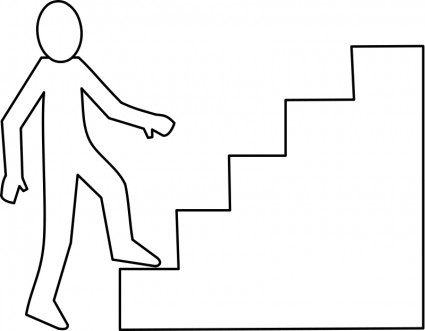Attitude Stair-Steps: Change Results From a Series of Attitudinal Changes
 How do you get someone to embrace something you want them to do? For example, you want church members to participate in a capital stewardship campaign to build a new preschool building.
How do you get someone to embrace something you want them to do? For example, you want church members to participate in a capital stewardship campaign to build a new preschool building.
The Attitude Stair-Steps is the concept that “action to bring about a change results from a series of attitudinal changes.”
The five steps in this model developed by the Main Event Management Corporation* represent the attitudinal positions of awareness, understanding, concern, dissatisfaction, and action.
Climbing the Attitude Stair-Steps
The Attitude Stair-Steps model uses a diagram of a set of stairs to show that there are different levels of attitude leading to action to embrace a change.
When you climb stairs, you must reach one level before moving to a higher level. The same is true of the Attitude Stair-Steps. The five steps on the Attitude Stair-Steps represent the five attitudinal changes that a person goes through in taking action to bring about change.
Step 1 – Awareness. At the base level of the Attitude Stair-Steps is awareness. The individual must first become aware of a situation where action, or change is needed. This could be a problem needing improvement or an area of opportunity.
For example, for members to embrace a capital stewardship campaign to build a new preschool building it must first be communicated that there is a space problem. People without preschoolers most likely aren’t aware there is such a problem.
Step 2 – Understanding. The second step is understanding. In this step, the individual gathers additional information to gain an understanding of what is involved in the problem or opportunity, and how certain action might bring about the desired change.
For example, to enhance understanding and move people up the attitude stair-step you might share how you are currently exceeding the maximum number of recommended children per room and the cost and number of new rooms that will be required.
Step 3 – Concern. The third step is concern. After gaining an understanding, the individual will either dismiss the subject, which stops the attitudinal change process, or they become concerned or interested in solving the problem or exploring the opportunity. If the concern or interest is strong enough, it will lead them to the next step.
For example, to develop concern you might show a video testimony of a preschool worker or preschool parent sharing the importance of providing the necessary space to care for and disciple the next generation of children.
Step 4 – Dissatisfaction. The fourth step is dissatisfaction. At this step, the individual has developed a desire to embrace the change. But dissatisfaction doesn’t guarantee action. Often, the individual may remain at this fourth step without ever taking action. The attitudinal change process will move up to the next level-action–only if the dissatisfaction becomes sufficiently strong.
For example, to prompt dissatisfaction you might share how parents are not attending church because they don’t want to leave their child in an over-crowded room.
Step 5 – Action. The final step on the Attitude Stair-Steps is action. The degree of action taken will be determined by the individual’s analysis of what it will take to satisfy their dissatisfaction.
For example, you might provide a prayer guide and encourage members to take time to process and pray through the information before making a decision on whether or not to support the capital stewardship campaign.
Persuading Others to Embrace Change
None of us like to do things that we don’t understand. Church leaders though can help members reach the next step by giving them more information that will help them understand the proposed change, and then the process can continue through the rest of the steps: concern, dissatisfaction, and action.
At every step, information is the key to keeping people moving toward action. You cannot force people to move up the stair-steps and take the proposed action, but you can provide the information they need to keep moving up the stairs.
*This post is a general description of the concepts represented by the Attitude Stair-Steps model found in the Main Event Management Organizational Leadership program, Model-Netics. Contact me at jim@sacredstructures.org to discuss how to bring Model-Netics Training to your church or organization.
Posted on October 28, 2014




















